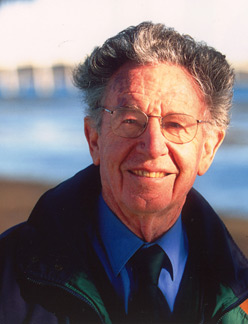
Professor John Melvin Swan AO FAA FTSE was born 25 April 1924 in Melbourne. He was interested in chemistry from an early age, and fondly remembered playing with sulphur in a garden shed at eight years old. Swan left school at 16 to join the Imperial Chemical Industry of Australia and New Zealand Limited as a junior laboratory assistant, analysing munitions chemicals in an explosives factory.
Swan continued his education at the Royal Melbourne Technical College (now RMIT University), earning a Diploma in Applied Chemistry in 1944 before progressing to the University of Melbourne, where he received his undergraduate degree three years later. Following graduation Swan was awarded a CSIR (now CSIRO) scholarship, and in 1947 he embarked on a PhD program at Imperial College in London. Upon his return to Australia, Swan joined CSIR as a chemist—it was during this time that he won a Fulbright Award, allowing him to travel to Cornell University Medical College in New York, where he played a part in the synthesis of the peptide hormone oxytocin.
When Monash University was founded in 1958, it was Swan who suggested naming it after civil engineer General Sir John Monash; in 1966, Swan departed CSIR to act as Foundation Chair of Organic Chemistry at the university. Swan later served as Pro Vice-Chancellor from 1971 to 1975 and became the Dean of the Faculty of Science in 1976, a position he held until retirement.
During his time at Monash, Swan became involved in environmental issues, chairing the scientific advisory committee for a study of the environmental consequences of industrialising Western Port. His interest in conservation continued after his retirement and subsequent appointment as Emeritus Professor in 1984. Swan became involved in the Phillip Island Conservation Society and had appointments to the Westernport Region Water Authority, the CRC for Southern Hemisphere Meteorology, and the Victorian Coastal Council. He also served on the scientific advisory committee of the Port Phillip Bay Environmental Study and as a director of the Western Port Seagrass Partnership.
Swan was the recipient of numerous honours, including election as a Fellow of the Royal Australian Chemical Institute (1955), the Australian Academy of Science (1968) and the Australian Academy of Technological Sciences and Engineering (1994). He was awarded the HG Smith Medal (1965), the David Syme Research Prize (1965) and the ANZAAS Medal (1994), as well as receiving the Australia Centenary Medal in 2001 and being made an Officer of the Order of Australia in 2002.
Professor John Melvin Swan passed away peacefully at home at the age of 91 on 15 June 2015. He is survived by his children Margaret, Barbara, Sally and Angus, as well as eight grandchildren and one great-grandchild.
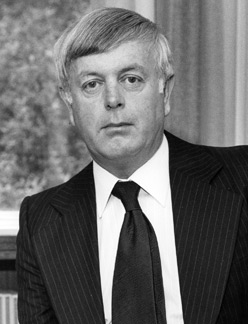
Professor Lawrence Walter Nichol FAA was born 7 April 1935. He trained as a high school teacher but was drawn to research, earning a Bachelor of Science with Honours from the University of Adelaide in 1957 before obtaining his PhD on the DNA molecule five years later.
In 1960, Nichol won a Fulbright Scholarship, which took him to Clark University in Massachusetts. He returned to Australia in 1963, joining the John Curtin School of Medical Research at the Australian National University as a research fellow. Nichol moved to the University of Melbourne Biochemistry Department in 1966, initially as a senior lecturer before progressing to a post as Reader in Biochemistry.
Nichol returned to ANU to take up the role of Professor of Physical Biochemistry in 1971, a position he would hold until his appointment as Vice-Chancellor at the University of New England in 1985. A few years later he moved to the same post at the Australian National University, a role he held until his retirement in 1993.
Among his many accomplishments during his time at ANU, Nichol shepherded the university through changes to the tertiary education sector and created a new research school; he is remembered as an unpretentious leader by his contemporaries, a characterisation that is upheld by his insistence that his successes as ANU Vice-Chancellor must also be attributed to wider university efforts, talents and dedication.
Nichol was awarded the David Syme Research prize in 1966,the Lemberg Medal in 1977, and received a DSc from the University of Adelaide in 1974. He was a Fellow of the Royal Society of NSW and the Royal Australian Chemical Institute, and was elected to the Australian Academy of Science in 1981.
Professor Lawrence Walter Nichol passed away at the age of 80 on 29 June 2015. He is survived by his wife Rosemary and children Scott, Stuart and David, and daughters-in-law Marni and Sandi, as well as four grandchildren.
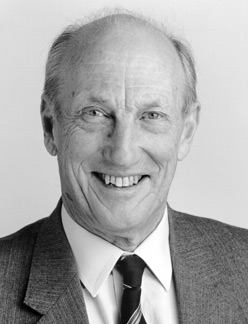
Professor David Parker Craig AO FAA FRS was born 23 December 1919 in Sydney. Craig appreciatively recalled having excellent mathematics, physics, and chemistry teachers as part of his early education, an experience which sparked his lifelong interest in the intersection of physics and chemistry.
Craig enrolled at the University of Sydney in 1937, receiving a bachelor's degree in 1940 and a Master of Science the following year. In 1941, his scientific career was interrupted by war service; Craig served in Australia for three years before being assigned to return to the University of Sydney as a lecturer and researcher in physical chemistry. It was during this time that he met his future wife Veronica (Ronia) on a train between Sydney and Nowra; Craig would later say that meeting her was the best thing that ever happened to him.
In 1946, Craig was awarded a Turner and Newall Research Fellowship and he departed Australia for University College, London. After receiving his PhD in 1949, Craig was appointed lecturer at University College, where he remained until 1952. He returned to Australia as a professor of physical chemistry at the University of Sydney, and then in 1956 moved back to England as professor of theoretical chemistry at University College, a position he held for the next 11 years. By this point Craig was thoroughly immersed in his pioneering research regarding excitons in molecular crystals.
Craig returned to Australia for good in 1967, taking up the role of Foundation Professor of physical and theoretical chemistry at the Australian National University. There he remained until his retirement in 1984, a distinguished career that included holding the position of Dean of the Research School of Chemistry from 1970 to 1973. Following retirement, Craig continued at ANU as a Visiting Fellow in the Department of Chemistry, researching and authoring papers with a focus on molecular quantum electrodynamics.
Craig was elected as a Fellow of the Australian Academy of Science in 1969, and later became Treasurer in 1985 before serving as President from 1990 to 1994. He also served on the Prime Minister’s Science and Engineering Council, was Chairman of the Queen Elizabeth II Fellowships Committee, and was appointed a member of CSIRO Executive from 1980 to 1985.
Craig was the recipient of numerous awards, including the HG Smith Memorial Medal (1972) and the Leighton Memorial Medal (1991), as well as being made an Officer of the Order of Australia in 1985. He was further honoured with an eponymous wing at the Research School of Chemistry in 1995, as well as the Australian Academy of Science’s David Craig Medal, which recognises outstanding contributions to chemical research. Craig was elected a Fellow of the Royal Society in 1968 and named a Distinguished Fellow of the Royal Society of New South Wales in 2009.
Professor David Parker Craig passed away at the age of 95 on 1 July 2015. He is survived by his wife Ronia and children Andrew, Hugh, Mary Lou and Douglas, as well as nine grandchildren and four great-grandchildren.
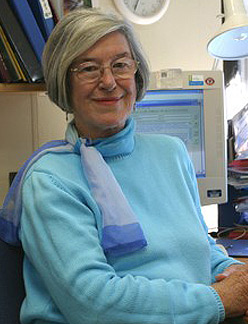
Professor Jan Mary Anderson FAA FRS FDhc(Umea) was born 12 May 1932 in New Zealand. Her father hoped she would follow in his footsteps and become a doctor, but Jan had her sights set on a career as a high school teacher. After finishing school, she was awarded a scholarship from the New Zealand Department of Education to the University of Otago, where she completed a Bachelor of Science and Master of Science in organic chemistry.
Upon graduation in 1956, Jan won a fellowship to undertake a year of postgraduate study in the United States; she selected the University of California at Berkley, but her New Zealand qualifications were not recognised and she had to enrol as a PhD student. This was a pivotal time in Jan’s life, writing a thesis on biosynthesis of chlorophyll and carrying out research in the electric atmosphere of Nobel Laureate Melvin Calvin’s laboratory. Calvin accepted very few PhD students, and the experience was highly influential in shaping Jan’s future career.
After receiving her doctorate in 1959, Jan travelled Europe for two years, contemplating whether she wanted to become a teacher as planned or continue researching. She contacted John Falk FAA FRACI at the Division of Plant Industry at CSIRO and asked about employment prospects—he offered her a role as a research scientist, and that was that. She remained at CSIRO for the next 36 years, producing significant research on the molecular basis of photosynthesis and becoming Chief Research Scientist in 1982. Upon retirement in 1995, Jan joined the Australian National University as an Adjunct Professor at the Research School of Biological Sciences, where she remained for the rest of her life.
Jan was elected to the Australian Academy of Science in 1987 and quickly became a deeply involved Fellow, serving on the Council from 1991 to 1994 and as Vice-President from 1992 to 1993. She was Chair and Member of several Sectional Committees from 1988 to 2003 and served on the House Committee from 2001 to 2011, as well as both the Japan Exchange and the JSPS Fellowship Committees between 1988 and 2014. Jan also served on the Boden Research Conferences from 1987 to 1994 and chaired the Rudi Lemberg Travelling Fellowship from 1992 to 2003.
Jan’s outstanding contributions to her field led to numerous honours, including the Lemberg Medal (1983), Fellowship in the Royal Society (1996), the Robertson Medal (1998), an Honorary Doctorate from the University of Umeå, Sweden (1998), the Centenary Medal (2000), and the International Society of Photosynthesis Research Lifetime Achievement Award (2007). A highly cited author, Jan was named the Thomson Australian Citation Laureate in Plant and Animal Biology in 2004.
Professor Jan Mary Anderson passed away on 28 August 2015 following a brief illness. She is survived by stepchildren Marion, Martin and Caroline, Chris and Gudrun, Roger and Danielle, as well as six grandchildren.
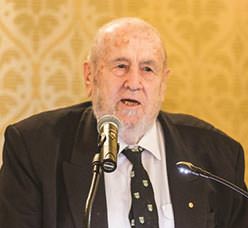
Emeritus Professor Harry Messel AC CBE passed away on 8 July 2015.
In 2014, Professor Messel was awarded the Academy Medal in recognition of his 'conspicuous and enduring service' to the cause of science in Australia. The award recognised in particular his innovative scientific leadership through the establishment of the Physics Foundation at the University of Sydney, his vision for secondary school science education and the resulting series of textbooks, and the establishment of his International Science Schools.
© 2025 Australian Academy of Science